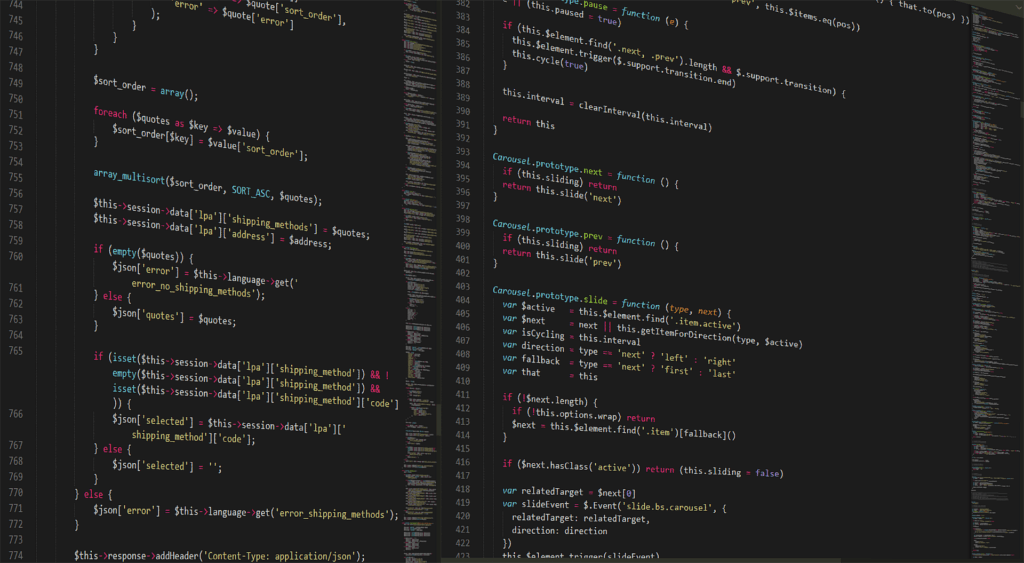
Strona internetowa nie jest dziś żadnym luksusem. To obowiązkowy element prowadzenia działalności gospodarczej i podstawowy sposób dotarcia do potencjalnych klientów. Ile kosztuje strona internetowa? Cena strony www jest uzależniona od szeregu czynników. Co wpływa na koszt strony internetowej i na co zwrócić uwagę, tworząc własną stronę internetową? W tekście kompleksowo wyjaśnimy wszystkie aspekty.
Współczesne strony internetowe to nie tylko firmowe wizytówki, ale też profesjonalne narzędzia sprzedaży czy sposób na przekazywanie użytkownikom określonych treści. Niezwykle istotne jest by strona internetowa była spójna z innymi elementami wizualnymi (logo, grafiki w social mediach, wizytówki, plakaty czy inne materiały reklamowe) przedsiębiorstwa, które składają się na elementy brandingu przedsiębiorstwa.
Pamiętaj, że strona www może decydować o ewentualnej transakcji lub nie. O tym czy marka wygląda na profesjonalną czy nie. Klient w kilka sekund oceni, czy witryna jest przyjazna, czytelna i profesjonalna. Jeżeli nie, prawdopodobnie opuści serwis i nigdy na niego nie wróci!
Z tego względu tak istotna jest wysoka funkcjonalność strony, zgodny z najnowszymi trendami UX/UI layout, oddający charakter przedsiębiorstwa design, szybkość ładowania strony, optymalizacja SEO czy dostosowanie do pracy na różnych urządzeniach i przeglądarkach (tzw. responsywność). To wszystko musisz uwzględnić przy wyborze wykonawcy strony internetowej.
Szukasz profesjonalnego wykonawcy strony internetowej? Zaufaj getknow - poznaj smak satysfakcji!
W jaki sposób wybrać wykonawcę strony internetowej?
Tworząc stronę internetową musisz wybrać jej twórcę. Na rynku działa coraz więcej firm, które zajmują się wykonywaniem sieciowych witryn dla firm. Chociaż często z oferty handlowej wynika, że masz do czynienia z profesjonalistami, którzy wykonają dla Ciebie wysokiej klasy stronę www, zdarzają się naciągacze i oszuści.
Stworzeniem strony internetowej możesz zając się także samodzielnie, jeżeli masz pojęcie o funkcjonowaniu CMS takich jak WordPress czy Joomla, projektowaniu UX/UI itp. Wymaga to jednak zaangażowania, czasu, zmysłu estetycznego i wiedzy o podstawowych zasadach SEO, hostingu czy domenie. Z doświadczenia wiemy, że strony WWW tworzone we własnym zakresie to nie będzie dobre rozwiązanie.
Zapytaj, ile kosztuje strona internetowa w getknow!
Współpracujemy z Klientami z całej Polski i Świata.
Co powinna zawierać profesjonalna strona internetowa?
Strona wizytówka, sklep internetowy czy blog muszą zawierać elementy wpływające na pozytywny odbiór witryny przez użytkowników. O jakich atrybutach należy pamiętać przy tworzeniu strony internetowej?
- Łatwy system nawigacji - chodzi przede wszystkim o przyjazną dla czytelnika belkę z odnośnikami do podstron (menu) oraz mapę strony.
- Interesujące i angażujące grafiki - istotne z tego punktu widzenia są ciekawe infografiki, wykresy, ilustracje czy wszystko, co pomoże użytkownikowi w wyborze produktu lub usługi.
- Profesjonalne treści (w tym opisy produktów czy kategorii), które zatrzymają użytkowników - treści muszą mieć walory ekspercie, wspierać SEO i zachęcać użytkownika do reakcji (np. zakupu) poprzez tzw. CTA (call to action - zwrot zachęcający do reakcji).
- Czytelny i funkcjonalny wygląd - istotne z tego punktu widzenia są prawidłowo wykadrowane i obrobione zdjęcia, przyjazne dla oka buttony czy czytelne graficznie menu. Ważny będzie też cały layout, wyświetlający się prawidłowo i pasujący do marki danego przedsiębiorstwa.
- Zrozumiały podział na kategorie i podkategorie - wpisy czy produkty muszą być w prawidłowy sposób uszeregowane. Podział musi być zrozumiały dla użytkowników, aby ci odnaleźli interesującą ich tematykę wpisów lub produkty o konkretnym przeznaczeniu.
- Zabezpieczenia przed atakami z zewnątrz - chodzi o wdrożenie filtrów antyspamowych, systemów chroniących pliki i dane użytkowników oraz zabezpieczeniu treści przed ewentualnym zainfekowaniem wirusami albo całkowitym usunięciem.
Czym powinna charakteryzować się firma, która wykona stronę internetową?
Jak wspomnieliśmy wyżej, wykonanie strony internetowej możesz wziąć na swoje barki lub zostawić to profesjonalistom. Koszt stworzenia witryny przez doświadczoną agencję jest wyższy, ale otrzymasz produkt najwyższej klasy, który wspomoże rozwój Twojej firmy.
Tworzenie stron internetowych stało się w ostatnich latach bardzo popularnym zajęciem dla mniej doświadczonych przedsiębiorców i freelancerów. Nie zawsze są oni w stanie zrealizować projekt wymarzonej przez Ciebie strony www, często nie wywiązują się z zawartej umowy, a kontakt szybko sie urywa.
Bardzo często do naszej agencji przychodzą Klientci którzy szukają profesjonalnych, indywidualnych rozwiązań. Z tego względu przy wyborze odpowiedniego wykonawcy należy zwrócić uwagę na kilka elementów. Jakich?
- Doświadczenie - poproś o pokazanie jakie strony internetowe dotychczas wykonała wybrana przez Ciebie firma. Nasza agencja interaktywna od wielu lat zajmuje się tworzeniem i pozycjonowaniem witryn w sieci. Realizowaliśmy strony www dla deweloperów, dealerów samochodowych, prawników czy firm przemysłowych. Możemy zająć się także przygotowaniem Twojej strony internetowej.
- Certyfikaty, szkolenia - wykonane kiedyś strony www to nie wszystko. Odpowiednia firma wykonująca tego rodzaju usługi przechodzi regularne szkolenia (np. z narzędzi Google) i ma certyfikaty świadczące o ich umiejętnościach (m.in. z zarządzania bazami danych).
- Opinie i Referencje - pamiętaj, żeby sprawdzić rzetelność agencji poprzez przejrzenie opinii w Google, referencji czy listów polecających od dotychczasowych klientów. To dowód, że marka ma rzeczywiście czym się pochwalić.
- Zakres świadczonych usług - strona internetowa wymaga szeregu różnych działań. Dobrze, jeżeli wybierzesz usługodawcę, który zajmie się wykonaniem witryny od A do Z. Zapytaj czy agencja zatrudnia copywriterów, grafików i czy zajmuje się pozycjonowaniem. U nas możesz liczyć na to wszystko.
Oczywiście, to ile kosztuje wykonanie strony internetowej przez doświadczoną agencję to druga sprawa. Na pewno zapłacisz więcej niż za wynajęcie freelancera. Czy jednak warto pozornie i w krótkim terminie oszczędzać? Niekoniecznie.
Ile kosztuje strona internetowa - cena nie zawsze powinna grać główną rolę!
Koszt postawienia strony www przez profesjonalistów nie jest realatywnie wysoki, w stosunku do długofalowych korzyści jakie możemy dzięki niej osiagnąć. Jest wart swojej ceny. Witryna internetowa pełni dziś kluczową rolę marketingową, będąc swoistą wizytówką firmy. Dobrze wykonana strona internetowa świadczy o innowacyjności, rzetelności, sumienności i profesjonaliźmie marki.
Za takie postrzeganie Klienta zdecydowanie warto zapłacić dodatkowe pieniądze. Koszt profesjonalnej strony www jest o wiele niższy niż przygotowanie kampanii outdoorowej, stworzenie spotów wideo, czy wynajęcie influencera do współpracy. W przeciwieństwie do wyżej wymienionych narzędzi reklamowych, daje też większe szanse na sukces.
Żeby jednak witryna spełniała swoją rolę, nie może mieć błędów, powinna być oparta na zasadach SEO i UX. To musi kosztować. Strona internetowa (nawet prosta) to wiele intensywnej pracy, konieczność znajomości najnowszych trendów i dostosowywanie się do potrzeb klienta.
Pamiętaj, że cena strony internetowej zależy też od nakładów pracy. Nikt nie wykona dla Ciebie witryny "za półdarmo" jeżeli potrzebujesz rozbudowanego serwisu, z wieloma podstronami, rozbudowanymi grafikami czy z zaawansowanym systemem płatności. Jesteś w stanie obniżyć kwotę (np. wykonując samodzielnie teksty na stronę, albo korzystając z gotowych szablonów), ale tylko wynajęcie profesjonalistów do poprawy/wdrożenia projektu zapewnia sukces. W getknow nie idziemy na kompromisy, zawsze stawiamy jakość strony internetowej na pierwszym miejscu.
Jakie strony internetowe są dziś najpopularniejsze w sieci?
Strona internetowa to niezwykle szerokie pojęcie. W sieci działa wiele różnych witryn, a każda z nich ma zupełnie inne przeznaczenie. Poszczególne rodzaje różnią się od siebie pod względem budowy, doboru grafik, rozbudowania modułów i systemu działania.
Cena strony internetowej może różnić się w zależności od tego, jakim rodzajem jesteś zainteresowany jako zleceniodawca.
Firmowa strona wizytówka
Jest to zwykle najczęściej spotykany rodzaj witryn internetowych. Taka strona internetowa zawiera zwykle od 5 do 10 podstron (Home, O nas, Oferta, Realizacje, Kontakt) i spełnia spełniać funkcję wizytówki. Powinna być nie skomplikowan, przejrzysta i zawierać najważniejsze informacje o firmie i realizowanych usługach. Dobrze jaby znalazły się na niej takie elementy jak opinie Klientów czy logotypy partnerów.
Świetnie sprawdza się dla małych i średnich firm, które nie mają wiele informacji. Ile kosztuje firmowa strona wizytówka? - od ok 4000 do 7000 tys złotych. Koszt wykonania zależy od ilości funkcjonalności, wersji jezykowych i innych elementów.
Onepage
To prosta strona internetowa, która składa się wyłącznie ze strony głównej. Jej największą zaletą jest prostota i funkcjonalność. Jej zadaniem jest prezentacja najważniejszych informacji o marce i zachęcenie klienta do podjęcia współpracy.
Tego rodzaju stronami internetowymi są najczęściej kreatywne wizytówki firmowe. Świetnie sprawdza się dla brandów, które nie mają wiele treści. Na takie strony firmowe stawiają też zwykle mniejsze marki, które dopiero rozpoczynają działalność. Wadą stron typu landing page jest fakt, że nie sa one przyjazne procesowi pozycjonowania. Na czym polega pozycjonowanie stron www przeczytacie tutaj. Koszt takiej strony wacha sie pomiędzy 2000 - 4000 tyś złotych.
Landing page
Jest to strona internetowa składająca się z jednej, bardzo rozbudowanej podstrony. Strona landing page może być częścią bardziej rozbudowanego serwisu lub pojedynczą domeną (jako dodatek do strony firmowej). Strona langing page przypomina strukturą one page. Dotyczy jednak konkretnych akcji marketingowych służących do promowania określonych towarów lub usług. Jej cykl życia jest zwykle bardzo krótki. Czasem landingi przygotowywane na potrzeby pozycjonowania.
Za podstawową stronę internetową typu landing page musisz zapłacić około 2000 złotych. Zaawansowane marketingowo treści kosztują już ponad 3000-4000 złotych.
Blog internetowy
To dynamicznie i regularnie aktualizowana strona internetowa, która dotyczy konkretnej tematyki. Na blogu przedstawiane są treści poradnikowe, testowe czy artykuły reporterskie. Blogi prowadzone są najczęściej przez influencerów albo mogą stanowić dodatek do strony internetowej firmy. Mają niebagatelne znaczenie dla SEO witryny. (głównie na potrzeby pozycjonowania fraz z tak zwanego "długiego ogona")
Ile kosztuje strona internetowa typu blog? Najczęściej jest to wydatek od 1000 do nawet 15 tysięcy złotych. Wiele zależy od charakteru witryny, liczby kategorii i grafik. Oczywiście, bloga możesz przygotować samodzielnie (np. korzystając z możliwości WordPressa).

Portal
Wszechstronny rodzaj witryny, zawierający m.in. sekcję wiadomości, zakupów czy porad. Użytkownicy korzystający z portali mogą zakładać na nich konta, korzystać z dedykowanej skrzynki internetowej, a niekiedy również grać w gry online i sprzedawać swoje produkty. Portale łączą ze sobą funkcjonalności strony różnego rodzaju.
Portale to bardzo rozbudowane strony www. To profesjonalne strony internetowe wymagające ogromnego nakładu pracy. Z tego powodu najprostszy portal (na bazie gotowych szablonów) kosztuje od 10 tysięcy złotych w górę. Bardzo zaawansowane projekty mogą wymagać nawet kilkudziesięciu tysięcy złotych wkładu.
Sklep internetowy (platforma e-commerce)
Internetowy sklep to specjalny serwis, który daje klientom możliwość kupowania produktów przez Internet. Cały proces zakupowy odbywa się online - od analizowania właściwości produktu po zamówienie, płatność i realizację zlecenia.
Poziom skomplikowania strony jest bardzo wysoki. Wymaga wdrożenia systemów płatności, zabezpieczenia formy przetwarzania danych klientów, logistyki zamówienia oraz trybu zakładania konta przez klientów zewnętrznych.
Podkreślmy, że poziom skomplikowania strony rośnie, jeżeli posiadasz bardzo dużo produktów, które należy opisać i sfotografować. Najdroższe są platformy e-commerce, gdzie użytkownicy nie tylko mogą kupować produkty, ale również sprzedawać je. Koszt sklepu internetowego wacha się od 4000 do 100000 zł.
Co wpływa na cenę strony internetowej w sieci?
Kwota jaką zapłacisz zależy głównie od stopnia zaawansowania projektu witryny. Nie da się jednoznacznie określić ile kosztuje zrobienie strony internetowej bez rozmowy z klientem, dokonania kompleksowej analizy jego potrzeb i oczekiwań, a także zbadania stany stron internetowych konkurencji.
Dopiero po kompleksowym sprawdzeniu powyższych czynników, możesz oczekiwać wstępnej wyceny projektu strony internetowej. Jakie elementy będą wpływać na jego wyższy lub niższy koszt?
System zarządzania treścią
Na koszt stworzenia strony internetowej wpływa m.in. system zarządzania treścią. Od niego zależy m.in. w jaki sposób będziesz mógł publikować treści na witrynie. Strona internetowa może być oparta m.in. na stworzonym od podstaw CMS lub dostępnym w sieci oprogramowaniu takim jak WordPress czy Joomla. Indywidualnie opracowany system jest oczywiście o wiele droższy. Obecnie strony oparte na systemie WordPress to najbardzie popularne rozwiazania.
Treści na stronie internetowej
Cena za usługę zależy także od liczby tekstów, które mają pojawić się na witrynie i ich stopnia zaawansowania. Im więcej opisów kategorii i produktów, tym musisz liczyć się z tym, że ostateczny koszt strony internetowej będzie wyższy. Teksty na witryny sieciowe tworzą profesjonalni copywriterzy, którzy wspomagają SEO witryny w wyszukiwarce Google.
Dodajmy, że na cenę strony internetowej wpływa także każdy dodatkowy język. Konieczność postawienia wielojązycznej witryny zwiększa o 30% cenę realizacji strony internetowej / za każdy dodatkowy język (i wydłuża czas wykonania zlecenia). Wykonawca będzie uwzględniał w cenniku tłumaczenie każdej podstrony oraz czas potrzebny na wdrożenie wersji jezykowej na stronie www.
Skomplikowane algorytmy
Stworzenie strony internetowej wymaga pracy webmasterów czyli specjalistów od przygotowywania kodu. Im bardziej rozbudowana strona firmowa zostanie im zlecona, tym większy czeka Cię wydatek. Wpływ na ostateczny koszt strony internetowej ma tutaj np. sposób zamówienia usług, system zarządzania danymi klientów, powiązanie witryny z aplikacją czy niestandardowe funkcjonalności.
Kwestie graficzne
Nowoczesne strony internetowe wypakowane są ciekawymi infografikami. Opiera się je na indywidualnie przygotowanym layoucie, czyli wzorcu graficznym przygotowanym przez profesjonalnego grafika specjalizującego się w tworzeniu stron internetowych zgodnych z najnowszymi trendami UX/UI. Specjaliści w zakresie grafiki komputerowej wyceniają swoje stawki za pojedynczy element (np. layout strony www, projekt podstrony, projekt danej sekcji lub dostosowane do potrzeb klienta zdjęcie), albo tzw. roboczogodziny poświęcone na stworzenie projektu strony internetowej.
Strona internetowa musi być też responsywna. Oznacza to, że jej wygląd dostosowany jest do urządzeń o zróżnicowanej rozdzielczości ekranu i charakterze pracy. Responsywny layout jest droższy (lecz jest to obecnie standard) bo wymaga wprowadzenia kilku wersji grafik i umiejscowienia ich w taki sposób, aby prawidłowo wyświetlały się w smartfonie, na komputerze i np. na tablecie. Tańszym rozwiązaniem jest skorzystanie z gotowych szablonów graficznych, chodź jako doświadczona agencja marketingowa zdecydowanie nie polecamy tego typu rozwiązań - jeśli chcemy mieć doskonałą jakość indywidualnej strony www, czysty kod, czy możliwość pełnej modyfikacji.
Pozycjonowanie strony internetowej
Pozycjonowanie strony internetowej warto zacząć na etapie jej tworzenia! Bardzo ważne jest przygotowanie strony www pod proces pozycjonowania (onsite - SEO: określenie struktury adresów URL strony www, analiza słów kluczowych i konkurencji, meta title i desription, optymalizacja zdjęć, strategia i inne). Dobrze przygotowana strona internetowa pod przyszły proces pozycjonowania (offsite SEO), pozwoli nam na osiągniecie szybszych wyników w krótszym czasie. Do kosztów firmowej witryny warto więc doliczyć pracę agencji pozycjonerskiej lub agencji interaktywnej jak nasza ;).
Najczęściej pozycjonowanie stron internetowych zależy od ilości fraz kluczowych i ich konkurencyjności. Odchodzi się już od rozliczania za efekty. Na dłuższą metę nie było to korzystne ani dla agencji SEO, ani dla ich klientów.
Zaawansowane systemy płatności
Ten element dotyczy przede wszystkim e-sklepów. To bardzo zaawansowany typ strony internetowej, posiadający nie tylko wiele grafik czy tekstów. Konieczny jest też bezpieczny, wygodny i dopasowany do współczesnych trendów system płatności. Pwinien dać klientom możliwość płacenia przez aplikację bankową, e-przelewem, paywallem, kartą lub popularnym BLIKiem.
Realizacja Twojej strony internetowej w oparciu na dedykowane systemy płatności (np. powiązane z płatnością BLIK albo bankowością elektroniczną) jest dość droga. Wykonanie własnego systemu od podstaw kosztuje kilka tysięcy złotych.
Rozbudowana liczba podstron
Nawet pozornie podstawowa strona wizytówka może być stosunkowo droga, jeżeli ma wiele podstron. Najtańsza jest podstawowa strona stworzona na jednym layoucie czyli onepage. Im więcej dodatkowych podstron (które należy połączyć ze sobą poprzez prawidłowe linkowanie, zadbać o ich zawartość i prawidłowe wyświetlanie), tym strona będzie droższa. Koszt stworzenia pojedynczej podstrony strony waha się od 700 do 2500 złotych.
Bezpieczeństwo strony
Strona internetowa oparta na wdrożonych systemach bezpieczeństwa jest bardziej przyjazna dla użytkowników i wzbudza zaufanie algorytmów wyszukiwarki internetowej. Co oznacza bezpieczna strona internetowa?
Ta posiada m.in. prawidłowo dobrany certyfikat SSL, oparty na protokole szyfrującym HTTPS (zauważysz to po kłódce przy adresie strony www w przeglądarce). Bezpieczna strona internetowa postawiona jest na sprawdzonym hostingu (najlepiej z możliwością tworzenia regularnych backupów), ma uaktywnione wtyczki antywirusowe i firewall. Do tego dochodzi jeszcze dbałość o bezpieczeństwo danych, pozostawionych przez klientów.
Wdrożenie zasad bezpieczeństwa strony www to wydatek konieczny. Wysokiego poziomu ochrony danych wymaga m.in. wyszukiwarka Google. Inwestując w odpowiednie zabezpieczenia, inwestujesz też w zaufanie użytkowników.
Czas realizacji strony www
Ostateczna cena strony internetowej może zależeć też od czasu, który na realizację projektu ma wykonawca. Jeżeli potrzebujesz sklepu internetowego lub wizytówki "na już", nie licz na to, że znajdziesz taniego i rzetelnego webmastera czy grafika. Na bardzo dobry projekt i wdrożenie konieczne jest poświęcenie miesiąca pracy, a niekiedy nawet dwóch lub trzech (w zależności od stopnia zaawansowania witryny).
W getknow tworzymy strony www od A do Z!

Koszt wykonania strony internetowej - na jaki wydatek musisz się szykować?
Liczba wskazanych wyżej elementów nie jest przypadkowa. Tworzenie stron internetowych jest zadaniem rozbudowanym i wiąże się z podjęciem działań o szerokim zakresie (od programowania, przez pisanie, SEO aż po prace graficzne). To z tego powodu najczęściej strony internetowe kosztują od kilku do kilkunastu tysięcy złotych.
Czy można zrobić dobrą stronę internetową samemu?
Nie masz od razu takich pieniędzy? Możesz na początku postawić stronę samemu, w oparciu o WordPressa. To najpopularniejszy CMS w sieci. Czytelny instruktaż wskaże, jak krok po kroku przygotować własną witrynę.
Czas wykonania strony internetowej tego typu to kilka - kilkanascie godzin. Oczywiście, jeżeli nie masz wielkiego doświadczenia nie możesz oczekiwać zawrotnych rezultatów. Na początek może jednak wystarczyć. Wraz z rozwojem działalności zainwestujesz w profesjonalną stronę, wykonaną przez doświadczonych twórców.
Ile kosztuje strona internetowa dla e-commerce?
Ile kosztuje wykonanie sklepu internetowego? Doświadczona agencja interaktywna za najbardziej podstawową stronę - sklep tego typu weźmie kwotę od 5000 złotych. Bardzo zaawansowane platformy, z wieloma produktami i indywidualnie przygotowanym systemem płatności kosztują około 50-70 tysięcy złotych. Podkreślmy jednak, że nie ma górnej stawki za wykonanie sklepu internetowego. Kwoty mogą sięgać nawet setek tysięcy złotych.
Jaki jest koszt wykonania strony internetowej z wizytówką dla firmy?
Koszt strony www w formie wizytówki zależy od jej stopnia zaawansowania. Najprostszą wizytówką jest onepage (strony internetowe tworzone z jednej podstrony). Koszt strony www typu onepage waha się od 1800 do 3000 złotych netto w zależności od liczby grafik czy rozbudowania ilości treści.
Rozbudowana strona internetowa dla firmy to już większy wydatek. Bardzo zaawansowany projekt wymaga kilkunastu tygodni projektowania graficznego, modyfikowania kodu, wdrażania produktów i pozycjonowania. Ile kosztuje strona www w takiej wersji? Od około 5000 złotych w górę.
Postaw na jakość i zaufaj getknow!
Pracujemy dla Klientow z całej Polski i Świata.
Sprawdź opinie o nas.
Tanie strony internetowe - czy warto?
Wycena stron internetowych może niekiedy zaszokować. Kwota kilku tysięcy złotych jest trudna do akceptacji, szczególnie dla niewielkich przedsiębiorców. Alternatywą jest tania strona firmowa, wykonana samodzielnie lub przez freelancera, który zajmie się np. wyłącznie walorem technicznym i graficznym, a wdrożenie wszystkich tekstów zostawi Tobie. Czy koszt wykonania strony tego rodzaju rekompensuje związane z tym niedogodności?
Ile kosztuje tania strona internetowa?
Tanie strony internetowe nie są tworzone od podstaw. To witryny, które możesz stworzyć samodzielnie (przy pomocy dedykowanego w sieci kreatora) lub na podstawie dedykowanych szablonów. Niekiedy za stworzenie strony internetowej o mało skomplikowanej (zwykle gotowej już) strukturze biorą się też początkujący webmasterzy, którzy zaczynają dopiero swoją przygodę z zawodem.
Koszt strony internetowej opartej na szablonie, wykonanej przez doświadczonego webmastera zaczyna się od około 2000 złotych (w zależności od jej rodzaju). Cennik stron internetowych na gotowych CMS wykonanych przez niedoświadczonych projektantów (inwestycja obardzona ryzykiem błędów) waha się w przedziale 1000 do 1500 złotych.
Zalety taniej strony internetowej - jak przyoszczędzić?
Strony internetowe tworzone na bazie szablonów lub początkujących webmasterów-freelancerów mają swoje zalety. Idealnie sprawdzą się, gdy chcesz mieć szybko bardzo prostą stronę wizytówkową, ułatwiającą start w biznesie. Jakie korzyści mogą wynikać z posiadania taniej strony www?
- Niewielka cena strony internetowej - oczywiście największa korzyść to oszczędności. Freelancer nie weźmie często nawet połowy kwoty, którą zaproponuje duża i doświadczona firma.
- Możliwość zainwestowania środków np. w Google ADS - zamiast wydawać środki na rozbudowaną liczbę podstron, możesz zlecić wykonanie prostego serwisu. Strona wizytówka (taka jak strona landing page lub onepage) może spełniać swoją rolę, a zaoszczędzone pieniądze warto przeznaczyć na promowanie witryny, np. w Google ADS.
- Szybszy czas realizacji podstawowej witryny - wybierająć mniej rozbudowaną witrynę możesz oczekiwać też, że ta pojawi się w sieci szybciej niż np. rozbudowany portal.
Wady taniej strony internetowej - nie zawsze warto korzystać z "atrakcyjnych" ofert!
Jeżeli chcesz tanią stronę internetową (którą wykonasz samodzielnie lub przy pomocy mało doświadczonej osoby), musisz liczyć się z wieloma problemami. Na co szczególnie powinieneś zwrócić uwagę?
- Błędny kod witryny, narażony na ataki i występowanie errorów - niedopracowana strona internetowa narażona jest na ataki hakerskie typu DDoS, kradzież danych klientów, a także błędy HTTP (np. 404), czy podobne utrudnienia.
- Wolny czas ładowania strony internetowej
- Niewłaśwe przygotowanie strony internetowej pod SEO
- Nie profesjonalny wizerunek Twojej marki w sieci
- Brak kompleksowego spojrzenia na stronę internetową jako elementu, z którego składa się Twój brand.
- Niska wartość merytoryczna tekstów lub ich okrojona liczba - witryna z jednej strony, oparta na tekstach wygenerowanych przez AI lub posiadająca treści z błędami ortograficznymi jest odrzucana przez użytkowników i algorytmy Google. W przypadku stawek niższych niż rynkowe, ryzyko takich treści jest wysokie!
- Grafiki oparte na ilustracjach dostępnych w sieci - zindywidualizowane witryny zbudowane są na spersonalizowanych projektach graficznych. W przypadku najtańszych stron moduły oparte są na grafikach z sieci. Darmowe zdjęcia nie stanowią wielkiego problemu, ale już wdrażanie grafik objętych prawami autorskimi może sprowadzić na Ciebie bardzo duże problemy natury prawnej.
- Brak wsparcia technicznego i gwarancji na funkcjonalności strony - doświadczona firma nie tylko wdraża stronę internetową, ale też pomaga w szkoleniu z jej obsługi i eliminuje błędy na etapie pracy witryny. W przypadku wyboru najtańszego wykonawdy ciężko liczyć na takie wsparcie.
getknow - agencja interaktywna - gwarantuje pełną satysfakcję!
Ile kosztuje utrzymanie strony internetowej?
Ostateczny koszt strony internetowej zależy nie tylko od ceny za jej wykonanie. To także kwestia późniejszego utrzymania witryny. Ile rocznie będzie kosztować Cię strona www i co wpływa na taką, a nie inną cenę?
Jaki jest koszt hostingu strony?
Cena hostingu zależy od jego parametrów i pojemności. Im bardziej rozbudowana strona firmowa, tym większy i szybszy serwer będzie potrzebny do jej funkcjonowania. Koszt hostingu waha się od 150-250 złotych dla niewielkich stron typu landing page lub onepage do nawet kilkuset złotych w przypadku platform e-commerce.
Koszt domeny dla strony internetowej
Sam zakup domeny internetowej to najczęściej kilka lub kilkadziesiąt złotych. Zakup domeny z końcówką .pl; .com.pl czy .com to od 1 do 500 złotych. Droższe jest przedłużenie domeny. Tutaj stawki zaczynają się od 100 złotych (w zależności od rodzaju domeny, którą wybierzesz).
Co wpływa jeszcze na roczny koszt strony internetowej?
Pamiętaj, że działalność witryny nie kończy się na stworzeniu strony internetowej. Konieczna jest także jej obsługa. W przypadku bardzo zaawansowanych witryn ryzyko wystąpienia licznych błędów wzrasta.
Możesz spodziewać się m.in. przeciążenia serwera, trudności z funkcjonowaniem podstron czy utrudnień przy procesie logowania i zakupów. Cena obsługi zależy oczywiście od liczby i stopnia zaawansowania błędów, ale możemy przyjąć, że nie przekroczy 500 złotych.
Roczny koszt utrzymania strony internetowej to także pozycjonowanie strony. SEO pomaga w wyróżnieniu witryny w wyszukiwarce Google. Pozycjonowanie strony internetowej może kosztować 1000 złotych miesięcznie lub 20 tysięcy złotych miesięcznie. Wpływ na różnicę w stawkach ma m.in. liczba fraz, na jakie chcesz się pozycjonować i ich konkurencyjność.
Koszt utworzenia strony internetowej (hostingu i domeny) nie powinien przekraczać 300 złotych. Utrzymanie strony internetowej w rozrachunku rocznym to już natomiast koszt nawet 1000 złotych (bez SEO).
Na wszystkie tworzone przez nas strony www udzielamy gwarancji.
Stworzenie i utrzymanie nowej strony internetowej - porównanie
Widać jak na dłoni, ile kosztuje stworzenie strony internetowej i ile kosztuje utrzymanie strony internetowej. Jednorazowo o wiele większego wydatku wymaga zaprojektowanie i przygotowanie witryny, czyli wykonanie kodu, grafik, tekstów, systemów zakupowych, wgranie plików na serwer, wykonanie zabezpieczeń itd.
W kolejnych latach będziesz musiał natomiast utrzymać stronę internetową czyli opłacić hosting, domenę, a także dbać o jej konserwację. Po kilku latach cena utrzymania może przewyższyć cenę wykonania witryny.
Ceny stron internetowych - co jeszcze warto wiedzieć?
Nie da się więc jednoznacznie stwierdzić ile kosztuje nowa strona internetowa, bo jej koszt zależy od wielu czynników. To tak jakbyśmy mogli udzielic informacji ile kosztuje samochód - odpowiedź jest zawsze jedna - to zależy 🙂 Z jednej strony mamy profesjonalną pracę webmasterów, grafików, copywriterów i pozycjonerów. Z drugiej stworzenie strony internetowej wymaga czasu, ciągłego kontaktu ze zleceniodawcami i tłumaczenia szczegółów z realizacji projektu.
Pamiętaj, że cenę strony internetowej poznasz tak naprawdę dopiero przy zaakceptowaniu ostatecznego planu na jej wdrożenie. Wpływ na stawkę może mieć np. świadomość konieczności przeprowadzenia szkolenia z obsługi CMS dla pracowników.
Ile kosztuje stworzenie strony internetowej?
Podsumowując, cenę strony internetowej możemy określić od około tysiąca do kilkudziesięciu tysięcy złotych, w zależności od Twoich wymagań, potrzeb i charakterystyki prowadzonego biznesu.
Jeżeli zależy Ci na indywidualnej, profesjonalnej, opartej na nowoczesnych rozwiązaniach technicznych i w uczciwej cenie witrynie - skontaktuj się z nami. Od lat tworzymy strony internetowe dla klientów z różnych branż. Jesteśmy pewni, że realizacja Twojej strony internetowej będzie kolejnym wyzwaniem, któremu sprostamy!
Porozmawiajmy o współpracy!

Nawet najprostsza strona internetowa powinna mieć swój regulamin. Posiadanie regulaminu umożliwia pozyskanie informacji o swoich prawach i obowiązkach przez użytkowników danej strony, a także jest zabezpieczeniem dla twórców określonej witryny. W jaki sposób stworzyć regulamin strony internetowej, aby był on zgodny z obowiązującymi przepisami prawa? Czym różni się regulamin witryny od zasad świadczenia usług? Wyjaśnijmy wszystkie wątpliwości w tej sprawie!
Regulamin jest jedną z podstawowych form prawnych, która ma ogromny wpływ na relacje usługodawca - usługobiorca. Przed zawarciem umowy usługobiorcę (czyli np. Twojego klienta) obowiązuje kompleksowa analiza regulaminu, aby sprawdzić, czy warunki zawierania współpracy są zgodne z Twoimi wytycznymi.
Regulamin strony internetowej - najważniejsze informacje
Regulamin w praktyce jest po to, aby użytkownik wiedział, na jaką stronę wszedł. Powinien mieć dostęp do podstawowych informacji takich jak dane właściciela serwisu internetowego, wymagania techniczne obsługi strony internetowej, obowiązki konsumentów i ich prawa, sposób przetwarzania danych osobowych i wszystkich innych rzeczach, które wpływają na zakres usług danego serwisu.
Czym jest regulamin serwisu internetowego?
Zacznijmy od tego, że posiadanie regulaminu strony internetowej jest obowiązkowe dla wszystkich serwisów www, które funkcjonują w sieci i za pomocą, których świadczone są usługi elektroniczne. Bez tego użytkownik nie będzie miał pełnej wiedzy np. o prawach konsumenta, prawach autorskich, zasadach korzystania ze skrzynki pocztowej czy wpłatach na usługi premium.
Element ten dotyczy wszystkich stron, niezależnie czy mówimy o regulaminie sklepu internetowego, wizytówki firmowej, bloga, portalu informacyjnego czy reklamowego landing page, w kórym swiadczone są usługi elektroniczne. Pamiętaj, że w przypadku braku regulaminu, narażasz się na karę od Urzędu Ochrony Konkurencji i Konsumenta.
Świadczenie usług drogą elektroniczną - co to jest w praktyce?
Warto pamiętać, że serwis internetowy świadczy niekiedy usługi drogą elektroniczną. Co to oznacza?
Według przepisów prawa tj. ustawy o świadczeniu usług drogą elektroniczną, usługi te definiowane są jako świadczenia bez jednoczesnej obecności stron (na odległość), poprzez przekaz danych na indywidualne żądanie usługobiorcy, przesyłanej i otrzymywanej za pomocą urządzeń do elektronicznego przetwarzania, włącznie z kompresją cyfrową, i przechowywania danych, która jest w całości nadawana, odbierana lub transmitowana za pomocą sieci telekomunikacyjnej w rozumieniu ustawy z dnia 16 lipca 2004 r. – Prawo telekomunikacyjne.
W praktyce do usług tego rodzaju zaliczymy m.in. możliwość pozostawienia komentarza na stronie, wdrożenie wyszukiwarki internetowej, działanie newslettera czy wtyczek z social mediów.
Czym różni się regulamin strony www od regulaminu świadczenia usług drogą elektroniczną?
Regulamin świadczenia usług jest bardziej rozbudowaną formą informacji dla użytkowników strony. Chodzi o wskazanie użytkownikowi wszystkiego, co wiąże się z pozostawionymi na Twojej stronie danymi. To m.in. warunki świadczenia, informacja o reklamacji czy odstąpieniu od umowy.
Podstawowy regulamin strony www to najczęściej element strony wizytówkowej, bloga czy innej, podstawowej witryny. Te strony też muszą mieć regulamin!
Kiedy z kolei potrzebujesz regulaminu zawierających informacje o świadczeniu usług drogą elektroniczną? W przypadku, gdy tworzysz regulamin sklepu internetowego, portalu internetowego z usługami pocztowymi czy stronę internetową o charakterze interaktywnym.
Powody przygotowania regulaminu strony internetowej i regulaminu świadczenia usług drogą elektroniczną
Pamiętaj, że regulamin to nie tylko element wymagany przez prawo. Dzięki niemu możesz wiele wytłumaczyć użytkownikowi, poprawić parametry witryny i opisać, w jaki sposób funkcjonuje Twój serwis w formie jednego dokumentu, umieszczonego w widocznym miejscu (dobrym miejscem jest stopka strony).
Powody przygotowania regulaminu strony internetowej
- Udostępniony usługobiorcy regulamin sprawia, że zasady obopólnej współpracy są czytelne i przejrzyste.
- Regulamin wpływa na pozycjonowanie treści i zwiększa współczynnik UX.
- Regulamin określa Twoje prawa i obowiązki, co ułatwia prowadzenie biznesu.
- Kompleksowy regulamin (np. dla stron opartych na świadczeniu usług drogą elektroniczną) wymagany jest przepisami prawa, a treści regulaminu podlegają kontroli UOKiK.
- Pozwala uniknąć nieporozumień z klientami i buduje zaufanie odbiorcy Twojej strony do Ciebie.
Dlaczego warunki świadczenia usług drogą elektroniczną są tak istotne?
- Umożliwiają wskazanie klientowi, w jaki sposób może oddać, wymienić lub zareklamować towar.
- Są narzędziem zabezpieczającym ze strony potencjalnych klientów sklepu internetowego lub użytkownika poczty elektronicznej.
- Stanowią podkładkę do moderacji opinii czy komentarzy pojawiających się na stronie.
- Wskazują w czytelny sposób zasady korzystania z funkcjonowania strony.
- Świadczenia usług drogą elektroniczną są warunkiem koniecznym do prowadzenia np. sklepów internetowych.
- Zmniejszają ryzyko nieporozumień w kontakcie z klientami, a także zabezpieczają przed ewentualnym roszczeniem klienta.
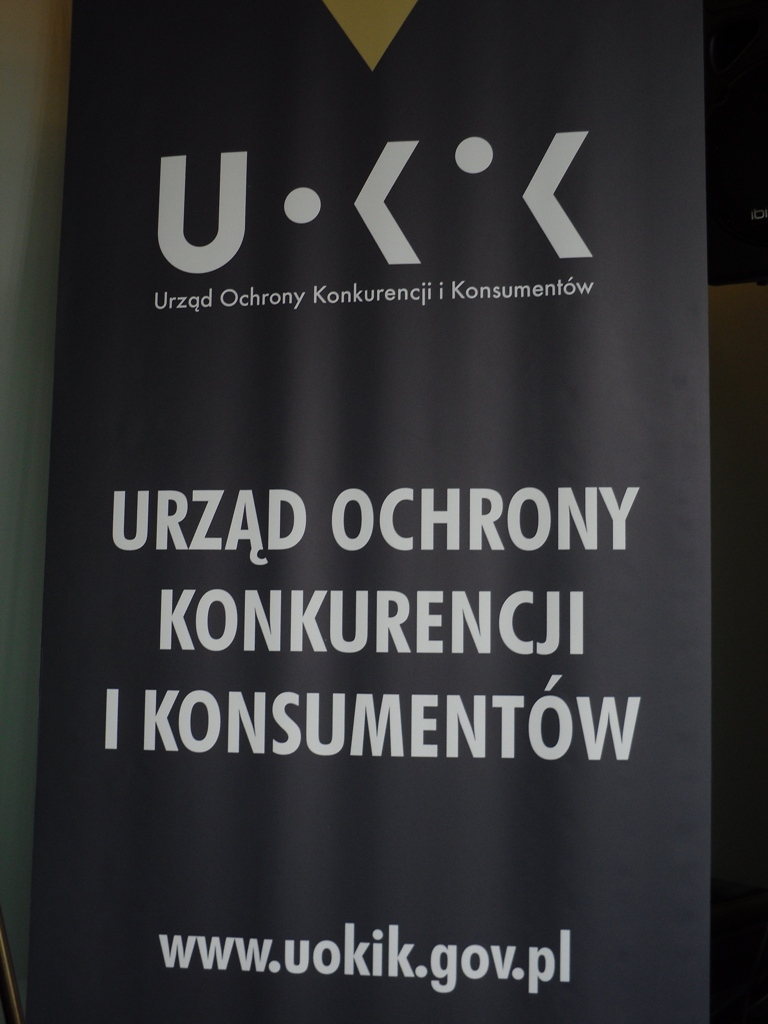
Elementy składowe regulaminów w internecie - jakie powinny być treści regulaminu?
Chociaż treść regulaminu internetowego jest różna, w zależności od charakteru strony www, jaką prowadzisz, każdy dokument tego rodzaju powinien mieć elementy wspólne. Dlaczego to tak istotne? Ponieważ przed zawarciem umowy współpracy każdy internauta może wejść w regulamin i sprawdzić, co od niego wymagasz i czego oferujesz.
Jakie elementy musi zawierać regulamin strony internetowej?
Podstawowy regulamin zawiera najważniejsze informacje o właścicielu strony www oraz o funkcjonowaniu tejże witryny. Co więc należy uwzględnić w przygotowanym dokumencie?
- Postanowienia ogólne (informacje o właścicielu strony oraz zdefiniowanie kim jest użytkownik strony).
- Definicja najważniejszych pojęć (poczta elektroniczna, usługa, produkt, zwrot, reklamacja, treść itd.)
- Informacja o oferowanych usługach, produktach czy zamieszczanych treściach.
- Zasady korzystania z serwisu internetowego.
- Postanowienia końcowe.
W dokumencie należy podać dane kontaktowe, NIP i adres przedsiębiorstwa-wydawcy strony, wymagania techniczne do obsługi (np. wymagana rozdzielczość czy wersja przeglądarki), wymienić funkcje witryny (rejestracja konta, dostęp do części premium) oraz zawrzeć informacje o prawach autorskich treści na stronie. Prawnicy dodają, że wskazane jest umieszczenie klauzuli, że wszelkie dane, ceny i opisy mają charakter informacyjny i nie stanowią oferty w rozumieniu Kodeksu Cywilnego. Nie są to tzw. klauzule niedozwolone.
Co powinien zawierać regulamin świadczenia usług?
Regulamin świadczenia usług zawiera szereg obowiązków i praw stron, które zawierają określoną umowę w czasie korzystania ze stron internetowych (np. sklepów internetowych). Jest adresowany np. do klienta wyznaczając jego prawa. Częścią regulaminu tego rodzaju nie mogą być elementy o charakterze bezprawnym, np. prawa odstąpienia, niezgodne z przepisami krajowymi czy unijnymi.
Jakie postanowienia zawarte w tego rodzaju regulaminie są zgodne z prawem?
- Wszystkie elementy, które powinien mieć regulamin standardowej strony www.
- Zakres usług świadczonych na stronie (np. usługi drogą elektroniczną).
- Warunki rozwiązywania umów, a także ich zawierania.
- Informacje o prawach konsumenta (np. prawo do odstąpienia umowy).
- Dane, które musi podać użytkownik, aby skorzystać z oferowanych usług.
- Informacje o warunkach reklamacji i zasady korzystania z takiej formy prawa.
- Informacje o dozwolonych na stronie komentarzach czy opiniach i sposobie ich moderacji.
O jakich elementach należy pamiętać, przygotowując np. regulamin sklepu internetowego albo innego rodzaju serwisu www z możliwością zakupu usług?
- Wszystkie dane na temat systemu płatności (również wspieranego pomocą systemu teleinformatycznego) i metod wdrożonych w sklepie.
- Zasady zwrotów, wymiany czy postępowania reklamacyjnego (zgodne z przepisami prawa).
- Koszty dostawy i sposoby dostarczenia produktów.
- Polityka zwrotów i reklamacji produktów.
W jaki sposób stworzyć regulamin strony internetowej?
Każda strona internetowa musi mieć regulamin. Trzymaj się tej łatwej zasady. Nie zachęcamy do kopiowania dokumentu z innych stron. Te najczęściej nie są uniwersalne, a ich duplikacja może stanowić łamanie prawa autorskiego.
Prosty regulamin możesz stworzyć samodzielnie, uwzględniając powyższe wskazówki, albo zakupić jeden z gotowych szablonów dostępnych w Internecie. Pamiętaj, że koniecznie należy dostosować go do warunków funkcjonowania Twojej witryny. Umieść go także w widocznym miejscu.
Jeżeli Twoja strona obejmuje świadczenie usług drogą elektroniczną, konieczne jest skorzystanie z usług profesjonalistów (prawników lub agencji wyspecjalizowanych w tworzeniu stron internetowych, takich jak nasza).
Warunki świadczenia usług, o których koniecznie należy pamiętać
Niezależnie czy opierasz się na prostym regulaminie strony, czy robisz rozbudowany regulamin sklepu internetowego pamiętaj, że UOKiK może nałożyć kary za klauzule niedozwolone (np. informację naruszającą zbiorowe interesy konsumentów czy ograniczające prawa konsumenta), uderzające w usługobiorcę treści i takie, które pomijają np. prawo odstąpienia od usługi.
W niektórych przypadkach kara za nieprawidłową treść regulaminu może osiągnąć nawet 10 procent obrotu Twoich sklepów internetowych lub innych biznesów opartych na tym dokumencie.
Regulamin strony internetowej - jak go stworzyć? Podsumowanie
Niektórzy lekceważą rolę regulaminu. Uważają, że "nikt tego i tak nie czyta", robiąc dokument "na odczepnego" lub w ogóle go nie wdrażając. W takiej sytuacji nie tylko narażasz się na karę od UOKiK.
To, że użytkownik nie przeczyta zasad działania strony, to tylko jego problem. Jeżeli np. rejestruje on konto na witrynie lub robi zakupy, klika "zaakceptuj regulamin" i zaświadcza, że akceptuje jego treść, stosując się do jego zasad. To dlatego pełni niebagatelną rolę!
Pamiętaj, że decydując się na stronę internetową należy przygotować go w sposób kompleksowy. Musi być dostosowany do przepisów prawa, ale też określać wszystkie elementy niezbędne dla konsumenta takie jak prawo odstąpienie od wykonania usługi, obowiązki przedsiębiorcy, zasady korzystania z serwisu czy wymagania techniczne niezbędne do zrobienia zakupów, czy założenia skrzynki mailowej.
Nie musisz być jednak specjalistą, znających się na prawach konsumenta, ochronie konkurencji czy klauzul niedozwolonych. Warto znaleźć od tego ludzi. Korzystając z naszych usług przy przygotowaniu witryny, Twoja strona www może mieć wysokiej klasy, zgodny z prawem i czytelny regulamin. Dokument, który nie będzie wzbudzał wątpliwości użytkowników, a jednocześnie będzie dobrze oceniany przez roboty indeksujące Google (sprawdzające, czy użytkownik ma wszystkie informacje o stronie).
Przedstaw nam charakter Twojej działalności, zaznacz jaką stronę chcesz otrzymać, a my dostosujemy do niej również wewnętrzne przepisy!
Sprawdź nas - skutecznie wdrażamy usługi interaktywne dla firm z całej Polski!

Strona www to zbiór plików, które znajdują się na specjalnych serwerach zwanych hostingiem. A więc jaki hosting wybrać? Na rynku działają mniejsze i większe firmy hostingowe, które udostępniają przestrzeń dyskową na różnego rodzaju strony www. W tekście podpowiadamy, jaki hosting wybrać, układamy ranking hostingów i wyjaśniamy takie pojęcia jak serwer wirtualny, hosting współdzielony czy serwer VPS.
Pamiętaj, że ranking hostingów dobrze jest przejrzeć jeszcze przed wykonaniem swojej strony www. Jakość usług firm hostingowych wpływa na odbiór Twojej strony przez klientów, pozycjonowanie, a także na projekt witryny. Np. tani hosting nie jest dostosowany do rozbudowanych platform e-commerce. Dlatego tak istotny jest research przed podjęciem decyzji, jaki hosting wybrać.
Z drugiej strony nie musisz szukać najdroższej oferty. W wyborze hostingu należy kierować się zasadą praktyczności, określenia własnych potrzeb i możliwości. Postaraj się też o tzw. okres testowy, który ułatwi Ci sprawdzenie tego, czy propozycja, jaką przedstawia firma hostingowa odpowiada na Twoje oczekiwania.
Czym jest hosting www i jaką pełni funkcję?
Zanim dowiesz się jaki hosting wybrać, poznaj zasady funkcjonowania hostingu stron internetowych i to jaki wpływ ma konto hostingowe na funkcjonowanie różnego rodzaju serwisów internetowych.
Co to jest hosting www?
Hosting strony www to specjalny serwer hostingowy, który służy do przechowywania plików Twojej strony internetowej i przetwarza je w razie potrzeby, umożliwiając urządzeniom odbiorców prawidłowe wyświetlanie konkretnych części witryny.
Dobry hosting umożliwia przetwarzanie i przechowywanie plików tworzonych w językach HTML, CSS, JavaScript, PHP, a także pozostałych, które umożliwiają sprawne działanie sklepów internetowych czy innych witryn.
Niezależnie od tego czy masz mały sklep internetowy, bloga, wizytówkową stronę internetową czy inny rodzaj witryny - musisz mieć nawet najtańszy pakiet. Bez serwera hostingowego, żadna ze stron internetowych nie będzie w stanie funkcjonować.
Jaką rolę pełni hosting dla strony www? Co zależy od hostingu?
Rola serwera dedykowanego jest niezwykle ważna. Wydajny hosting może bardzo poprawić funkcjonowanie stron internetowych. Co tak naprawdę zależy od zasobów serwera czy jego pojemności?
Szybkość działania strony www
Usługi hostingowe wpływają na szybkość działania strony internetowej. Lepszy serwer może obsłużyć większy ruch i szybciej przesyła pliki na serwer odbiorcy. W ten sposób witryna ładuje się efektywniej, co jest bardziej komfortowe dla odbiorców Twoich treści.
Zabezpieczenie plików stron www przed kradzieżą lub zainfekowaniem
Coraz więcej firm hostingowych zwraca uwagę na odpowiednią ochronę danych i plików. Hosting pełni tutaj niebagatelną rolę. Dobry serwer zabezpiecza pliki przed atakami hakerskimi (chroniąc je przed infekcją złośliwym oprogramowaniem) i robi regularne kopie zapasowe w razie przypadkowego lub specjalnego usunięcia danych przez osoby trzecie.
Płynność działania stron internetowych
Rolą wydajnego serwera jest wysyłanie plików z baz danych w taki sposób, aby użytkownik mógł w płynny sposób korzystać ze wszystkich możliwości strony internetowej. Istotna jest m.in. obsługa szablonów CSS czy umożliwienie szybkiego korzystania z witryny na różnych urządzeniach (komputery, tablety, smartfony).
Płynność działania stron internetowych wpływa również na funkcjonowanie systemu obsługi z punktu widzenia jej właściciela. Dlatego niezwykle ważny jest hosting stron www. Powinieneś wybrać hosting, który ułatwia wdrażanie nowych funkcji, wgrywanie kolejnych plików czy przeprowadzenie efektywnej aktualizacji CMS.
Brak błędów podczas wyświetlania kolejnych podstron (i niski zakres awarii)
Hosting dedykowany, serwer wirtualny czy hosting VPS powinno łączyć jedno - brak błędów. Należy wybrać hosting od firmy, która zapewnia jego ciągłość. Wybór hostingu niskiej jakości sprawia, że narażasz się np. na błąd 504 (Gateway Timeout).
To błąd, w którym jeden serwer nie dostaje odpowiedzi od drugiego podczas próby załadowania strony. Najczęściej związany jest z wadliwą pracą hostingu, albo wdrażaniem aktualizacji. Firma hostingowa powinna natychmiast naprawić taki błąd, a ewentualne update'y wprowadzać w nocy, po uprzedniej informacji dla użytkowników hostingów. Błędy czy aktualizacje zmniejszają ruch na stronie, gdyż użytkownik nie może odwiedzić Twojej witryny.
Hosting www - kluczowy nie tylko dla funkcjonowania strony internetowej
Hosting wpływa na odbiór strony, wygodę dla administratorów, ale także na pozycjonowanie. Jeżeli chcesz zainwestować w SEO, skonsultuj się z doświadczoną agencją przy wyborze hostingu.
Zachęcamy do kontaktu z naszą firmą przed podjęciem decyzji, na jakim serwerze chcesz stawiać stronę. Nasi doświadczeni specjaliści dobiorą hosting do Twoich potrzeb (uwzględniając parametry witryny).

Skorzystaj z naszego fachowego wsparcia getknow!
Parametry hostingu internetowego
Na rynku działa wiele firm hostingowych. Każda z nich twierdzi, że ma najlepszy hosting. Jeżeli szukasz naprawdę wysokiej wydajności hostingu, musisz wiedzieć jakie kryteria powinien spełniać. Chodzi m.in. o stabilność działania strony internetowej czy przestrzeń dyskową, którą otrzymasz w pakiecie.
Wielkość hostingu
To parametr decydujący o ilości danych, które można wgrać na nasz serwer. Jeżeli prowadzisz duże strony internetowe (takie jak np. portal z ogromną liczbą zdjęć czy filmów) albo sklepy internetowe, wybierając hosting musisz zwrócić na to ogromną uwagę.
Tanie hostingi oferują najczęściej około 2 GB wolnej przestrzeni dyskowej. To wystarczy na małą, rozwijającą się stronę internetową z pojedynczymi kontami mailowymi. W przypadku, gdy chcesz postawić bardzo rozbudowaną stronę www (blog recenzencki z wieloma zdjęciami produktów czy rozbudowany portal internetowy), zainwestuj w hosting, którego wielkość przekracza 10 GB.
Pamiętaj, że na pamięci dysku serwera będą znajdowały się także konta pocztowe, które mogą zabierać sporo przestrzeni. Im więcej użytkowników będzie miało u Ciebie e-maila, tym większy dysk należy zakupić. Przestrzeń to parametr, który decyduje jaki hosting wybrać.

Szybkość działania serwera
Jeżeli zastanawiasz się jaki hosting wybrać, to podpowiadamy - szybki. Im szybciej, tym lepiej. Stojąc przed dylematem wyboru hostingu nie możesz zapomnieć o szybkości jego pracy. Przepustowość to istotna kwestia (wpływa np. na pozycjonowanie strony i kwestie użyteczności dla odbiorcy). Warto sprawdzić jakie parametry daje Ci proponowana oferta hostingu.
Na szybkość działania serwera wpływają m.in. dyski twarde zainstalowane na komputerze serwera. Dobrze jeżeli obsługują go szybkie dyski SSD NVMe.
Jaki jest optymalny przepust serwera? Dobry hosting umożliwia przesyłanie plików z prędkością co najmniej 500 Mb/s. Zapewnia to szybkość ładowania podstawowej strony internetowej na optymalnym poziomie.
Jeżeli posiadasz rozbudowany serwis, oparty na dużej liczbie obszernych plików, koniecznie musisz wybrać jeden z najszybszych hostingów. Przepustowość błyskawicznych kont hostingowych osiąga nawet 1 Gb/s.
Zabezpieczenie bazy danych i plików
Jaki hosting wybrać? Przede wszystkim bezpieczny! Pliki Twojej strony internetowej muszą być chronione przed atakami z zewnątrz, usunięciem, wykradnięciem lub innymi skutkami działania szkodliwego oprogramowania. Wiele firm hostingowych wdrożyło już m.in. możliwość robienia regularnych kopii zapasowych, ale to niejedyny sposób ochrony, który udostępniają usługi hostingowe.
Do systemów ochrony bazy danych zaliczymy między innymi:
- zabezpieczenie 2FA - dodatkowa autoryzacja dla kont FTP;
- DNSSEC - rozszerzenie protokołu DNS;
- oprogramowanie antywirusowe - umożliwia skanowanie plików pod kątem obecności złośliwego oprogramowania;
- regularne tworzenie kopii zapasowych - w momencie, gdy stronę internetową zaatakuje złośliwe oprogramowanie, system może usunąć stare pliki i umożliwi Ci wgranie nowych, wolnych od infekcji. Każdy współczesny ranking hostingów winduje takie, które potrafią wykonać kopię zapasową danych.
Specyfika kont FTP
Istotne jest, aby hosting stron www posiadał możliwość obsługi zewnętrznego programu do FTP albo miał rozbudowany panel z budowaną funkcją obsługi intuicyjnego wgrywania plików. Konto FTP musi być przyjazne dla użytkownika, umożliwiać zmianę parametrów wgrywania plików i umożliwiać analizę danych (np. dostępnej przestrzeni dyskowej).
Liczba i charakter baz danych MySQL
Liczba czy parametry baz danych MySQL ma istotny wpływ ze względu na użyteczność hostingu. Istotna jest miejsce dostępne na bazę, obsługa zewnętrznych CMS (np. WordPressa), szybkość działania systemu i liczba baz.
Jeżeli Twój hosting udostępnia kilka baz danych MySQL, to na każdej z nich możesz postawić stronę internetową, bez obaw o wpływ na funkcjonowanie innej witryny. Warto przemyśleć tego typu rozwiązanie. To spore oszczędności, bo nie musisz kupować kilku hostingów dla wielu domen.
Dodatkowe usługi firm hostingowych i obsługa klienta - DO ZROBIENIA
Najlepszy hosting to nie tylko bezpieczeństwo, pojemność czy szybkość ładowania. To także wszechstronność usługi hostingowej, dostosowana do potrzeb użytkownika. Co to oznacza?
Najciekawsze oferty firm hostingowych zawierają m.in. dużą liczbę możliwych kont pocztowych, pomoc przy tworzeniu stron internetowych (np. wsparcie przy wdrażaniu plików), obsługę sklepu internetowego, zaawansowane wsparcie obsługi klienta oraz rozbudowane możliwości panelu klienta.
Nie jest wcale tak, że kupując niedrogi hosting nie możesz liczyć na takie dodatki. Niekiedy firma hostingowa dba o swoich klientów w sposób szczególny - nawet tych, którzy nie mają ogromnej przestrzeni dyskowej.
Rodzaje usług hostingowych - co warto wiedzieć?
Firmy hostingowe oferują różnego rodzaju serwery przystosowane do obsługi stron www. Co różni je od siebie? Każdy z hostingów ma inne przeznaczenie, inny jest rodzaj jego pracy i zróżnicowana jest także jego cena.
Hosting współdzielony
Hosting współdzielony to dzielony obszar serwera rzeczywistego, w którym każdy z użytkowników otrzumuje swoją przestrzeń (w formie fizycznej). Przestrzeń ta zależna jest od potrzeb użytkownika. Najczęściej wybierany hosting. Przeznaczony do wykorzystania na podstawowych stronach www.
Podkreślmy, że wszyscy użytkownicy hostingu współdzielonego korzystają z serwera o dokładnie tych samych parametrach (np. pamięci RAM czy procesora).
Hosting VPS (Virtual Private Server)
To rodzaj serwera wirtualnego. Firmy hostingowe wydzielają na serwerze realnym określoną przestrzeń, ale udostępniają użytkownikowi ją w formie wirtualnej maszyny. Oznacza to, że każdy użytkownik jest od siebie niezależny i dysponuje lepszymi parametrami niż w przypadku hostingu współdzielonego.
Serwer wirtualny jest stabilniejszy od hostingu współdzielonego, ale jednocześnie droższy.
Serwer dedykowany
W przeciwieństwie do hostingu współdzielonego, serwer dedykowany to pojedyncza maszyna (komputer), który w całości przeznaczony jest dla jednego użytkownika. Rola serwera dedykowanego to najczęściej obsługa dużych stron www (np. sklepu internetowego).
W przypadku serwerów dedykowanych mówimy bowiem o dużych przestrzeniach dyskowych i zaawansowanych parametrach. Serwery dedykowane są o wiele droższe niż np. serwer wirtualny.
Hosting w chmurze (cloud hosting)
Nowoczesne rozwiązanie do obsługi mniejszych stron www. Jest to hosting bardzo łatwy w obsłudze i przypomina trochę serwer wirtualny i hosting współdzielony. Otóż cloud hosting wykorzystuje część wielu serwerów dedykowanych. Pliki znajdują się na różnych dyskach i komputerach o zróżnicowanej mocy.
Dzięki temu rozwiązaniu, działanie strony www jest szybsze i bardziej stabilne. Dodatkowo możesz liczyć na regularne kopie zapasowe plików. Cloud nadaje się jednak do obsługi mniejszych stron internetowych.
Hosting pod konkretne CMSy (np. hosting WordPress)
Jeżeli chcesz postawić stronę internetową na WordPressie lub Joomli, możesz wybrać hosting ułatwiający jej przygotowanie. Ten ma już wgrane odpowiednie oprogramowanie i jest wstępnie skonfigurowany do Twoich potrzeb.
Wystarczy kilka chwil, aby postawić tam prostą stronę, a hosting z łątwością obsłuży jej pracę czy umożliwi płynną aktualizację wtyczek i szablonu.
Na jakim hostingu najlepiej postawić stronę internetową?
Wszystko zależy od potrzeb. Serwery dedykowane to najlepszy hosting dla posiadaczy portali internetowych i dużych platform e-commerce. Blog czy strona wizytówkowa może być częścią serwera wirtualnego lub hostingu współdzielonego. Jeżeli chcesz aktywować stronę na WordPress - postaw na hosting w chmurze albo specjalnie przystosowany pod to serwer.
Każdy z wymienionych wyżej rodzajów ma swoje wady i zalety. Kluczowe jest abyś m.in. mógł tworzyć regularne kopie zapasowe plików czy miał dostęp do zabezpieczeń antywirusowych.
Ranking hostingów - najlepszy wybór dla twojej strony internetowej
Jaki hosting wybrać? Uwzględnij czy ten ma okres testowy, szybkie dyski SSD NVMe, regularnie tworzy kopie zapasowe i posiada odpowiednią przepustowość i wielkość.
Ranking firm hostingowych poniżej uwzględnia te parametry. Braliśmy pod uwagę m.in. to jak firmy hostingowe podchodzą do klienta, a także czy ich serwery są odpowiednio stabilne
Najlepszy hosting (naszym zdaniem) udostępniają firmy Zenbox, cyberFolks, LH.pl i OVH. Przede wszystkim mają bardzo szeroką ofertę, którą możesz dopasować do swoich potrzeb. Najlepszy hosting jest stabilny, nie generuje błędów i umożliwia prostą konfigurację.
Robiąc to zestawienie uwzględniliśmy również opinie użytkowników. Nie oznacza to jednak, że inne firmy hostingowe są złe. Wiele przedsiębiorstw posiada szeroką ofertę, z której warto skorzystać, analizująć jej możliwości. Pamiętaj, że możemy Ci w tym pomóc!
Ile kosztuje hosting?
Ceny hostingu zależą głównie od przestrzeni dyskowej, jaką wybierzesz. Za podstawowy pakiet hostingu zapłacisz od około 70 złotych rocznie. Tu dostaniesz najczęściej możliwość zaimplementowania pojedynczej domeny, kilku kont pocztowych, podstawowej strony internetowej i jednej bazy danych MySQL.
Najdroższe warianty to koszt od 400 do 800 złotych rocznie. W takiej cenie możesz liczyć na dużą przestrzeń, dostosowaną do np. obsługi platform e-commerce. W sieci dostępny jest ranking hostingów z podziałem na rodzaj serwera - możesz pokusić się takowym, podczas wyboru miejsca "lokalizacji" strony www.
Czy najtańszy hosting to dobry wybór? Jeżeli tak, to dla kogo?
Wybierając jeden z tańszych hostingów nie możesz liczyć m.in. na dużą przestrzeń dyskową obsługującą Twoją stronę internetową, rozbudowaną obsługę bazy danych czy dużą liczbę kont pocztowych. Nie oznacza to jednak, że nie warto pomyśleć o zakupie tańszego wariantu.
Dla kogo będzie to najlepsze rozwiązanie? Dla każdego, kto np. posiada małą stronę firmową (w formie wizytówki onepage), bez wielu zdjęć i ilustracji, a także bez konieczności korzystania z kilku baz danych. Tańszy hosting sprawdzi się też, jeżeli nie wymaga
Jaki hosting www wybrać, jeżeli szukasz najtańszej alternatywy? Wybierz serwer współdzielony, z możliwością zakupienia certyfikatu SSL, przestrzeni dyskowej około 1-2 GB i możliwością zaimplementowania kilku kont pocztowych.
Warto poszukać licznych promocji, które wpływają na ranking hostingów. Dzięki nim np. za serwer zapłacisz mniejszą kwotę w pierwszym roku, albo otrzymasz domenę gratis do hostingu. Uwzględnij to przy wyborze.
Jaki hosting wybrać? Podsumowanie
Stroną internetową musisz postawić na hostingu stabilnym, o odpowiedniej przestrzeni i przepustowości, zabezpieczonym przed cyberatakami czy utratą danych. To najważniejsze kwestie. Dodatkową rzeczą jest funkcjonalnośc i możliwości np. obsługi dedykowanych CMS.
Jeżeli nie masz jeszcze strony internetowej i zastanawiasz się nad wyborem serwera - zachęcamy do kontaktu. Nie tylko przygotujemy dla Ciebie witrynę od podstaw, ale w praktyce dobierzemy również dostawcę usług hostingowych i domeny. Możesz liczyć na nasze pełne wsparcie!
Skontaktuj się z nami!
W artykule dokładnie przyjrzymy się „co to jest branding” i dlaczego warto w niego zainwestować.
Zaczynajmy!
Brand i branding? Co to znaczy ?
Brand - tłumacząc z języka angielskiego oznacza markę, rozumianą jako pewien rodzaj projektu, terminu, nazwy, symbolu lub innej cechy, która wyróżnia towar lub usługę danego sprzedawcy od towarów lub usług innych sprzedawców. Brand to określony wizerunek w oczach jego odbiorców.
Branding – jest to technika, określająca zestaw działań dzięki którym jesteśmy wstanie stworzyć spójny brand. Marka przyjmuje postać produktu, usługi, organizacji, osoby lub symbolu i trafia do świadomości jej odbiorców np. klientów czy kontrahentów. Proces rozumiany również jako wszelkie działania zmierzające do wzbudzenia pozytywnych, dobrze zapamiętywanych skojarzeń danej marki wśród odbiorców ich produktów lub usług oraz prostsza identyfikacja marki na tle konkurencji.
By prościej zobrazować znaczenie brandingu posłużymy się przykładem. Woda jako produkt sam w sobie niewiele się od siebie różni. Jak to jest, że za jeden rodzaj wody jesteśmy wstanie zapłacić więcej niż za drugi, chodź jej wartość podstawowa (gasi pragnienie, jest niezbędna do przeżycia) jest niezmienna?

Tu z pomocą przychodzi nam branding. Dzięki stworzeniu unikalnego wizerunku marki, jesteśmy w stanie odróżnić dany produkt od tych konkurencyjnych. Na rynku istnieją różni producenci wody np. Żywiec, Perrier, Evian czy Fiji i każda z nich ma inne znaczenie w oczach klientów. Przedsiębiorstwa tworzą marki z myślą o znalezieniu odpowiedniej pozycji dla swojego produktu na rynku, a swoim przekazem oddziałują na inną grupę Klientów.
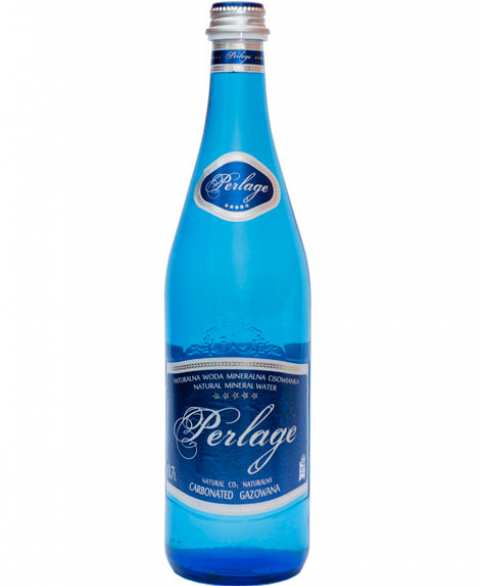
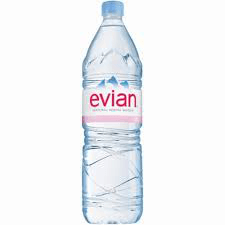
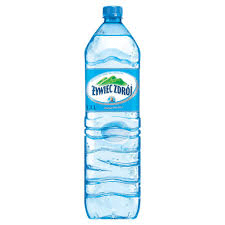

Oto jak marki komunikują unikalne cechy swoich produktów:
- Evian - sprawia, że czujesz się młodo i ekskluzywnie
- Żywiec - pochodzi z gór, jest naturalna i zdrowa
- Cisowianka Perlage - jest gazowana, ekluzywna i sexy
- Fiji - jest zdrowa, czysta, naturalnego, egozotycznego pochodzenia
Nadrzędnym celem przeprowadzenia procesu brandingu jest stworzenie określonego wizerunku marki, a następnie jego utrwalanie i promowanie wśród jej odbiorców. Posiadanie spójnego brandu powinno przynieść dla firmy wymierne korzyści np. większą sprzedaż, rozpoznawalność, niższe koszty pozyskania Klienta, a w efekcie finalnym – większy zysk.
Jak stworzyć silny brand? Elementy składowe w procesie tworzenia marki.
Przystępując do procesu tworzenia brandu należy zdefiniować jego podstwawowe elementy – strategię marki oraz jej ekspresję.
Przy opracowywaniu strategi marki powinniśmy odpowiedzieć sobie na następujace pytania:
- jakie są nasze cele biznesowe, a jakie pozabiznesowe? Dlaczego robie to co robie?
- jaka jest misja wizja, jakimi wartościami się kierujemy?
- kto jest moim klientem, a kto nim nie jest? (zdefiniowanie tzw. buyer persona)
- na jakim rynku działam, jaka jest moja konkurencja?
- czym sie chce wyróznic na tle konkurencji?
- jakie są moje silne, słabe strony oraz szanse i zagrożenia
- jaka jest moja strategia cenowa?
Ekpresja marki to element określający jak powinniśmy byc postrzegani w oczach Klientów. Definijąć ekspresje naszej marki powinniśmy odpowiedzic sobie na następujace pytania:
- jaka jest osobowość - persona / archetyp marki i jaki jest jej głos ?
- jaka jest nazwa, tagline, obietnica marki?
- jakie jest główne przesłanie marki?
- jaka powinna być indentyfikacja wizualna marki np logo, kolory itp ?
- jaki jest mój story telling?

Dlaczego branding jest ważny? Zalety posiadania spójnej strategii brandingowej.
Przedsiębiorstwa najczęściej decydują sie na stworzenie silnego brandu ponieważ wiedzą, że dzięki profesjonalnemu, spójnemu wizerunkowi ich marka staje się znana, bardziej prestiżowa, dzięki czemu będzie na długo zapadać w pamięci zarówno jej klientom, pracownikom jak i konrahentom.
6 zalet posiadania spójnego wizerunku:
- generuje sprzedaż
Klienci chętniej dokonują zakupów u marek posiadających profesjonalny, silny wizerunek, której mogą zaufać i znają jakość oferowanych przez nią usług.
- zwiększa wartość biznesową
Marki podsiadające spójną wizualizacje są postrzegane na rynku jako bardziej profesjonalne, stabilniejsze. Są przez inwestorów postrzegane jako bardziej wartościowe, dzięki swojej ugruntowanej pozycji na rynku.
- tworzy połączenia
Jeśli firma ma zbudowany silny brand jej pracownicy czują się dumni i bardziej utożsamiają z firmą dla której pracują. Oznacza to niższą rotacje pracowników oraz większe zaangażowania w prace dla takiego przedsiębiorstwa. Klienci zaczynają utożsamiać się z marką doceniając walory inne niż te wynikające z wartości podstawowej oferowanego produktu bądź świadczonej usługi.
- buduje zaufanie i wiarygodność
Dzięki profesjonalnemu brandingowi, marki o wiele szybciej budują zaufanie wśród potencjalnych klientów i kontrahentów. Ludzie chętniej współpracują z markami, które mają dobrze przemyślany, adekwatny do branży, profesjonalny wizerunek.
- wspiera działania reklamowe
Dobrze przygotowany branding jest drogowskazem dla wszystkich późniejszych działań marketingowy. Dzięki jasno określonemu wizerunkowi możemy być pewni, że przygotowane przez nas przekazy marketingowe są spójne i trafiają do właściwej grupy odbiorców. Kampanie i reklamy przeprowadzone w ten sposób osiągają duże lepsze współczynniki konwersji, a co za tym idzie generują oszczędności na wydatki reklamowe.
- buduje przewagę konkurencyjną
Silne marki wyróżniają się na tle konkurencji osiągając stałą przewagę konkurencyjną.
Podsumowanie
Jeśli posiadamy dobrze skonstruowany wizerunek marki możemy wyróżnić się na tle konkurencji i szybciej osiagnąć zamierzone cele. Istotny wpływ na postrzeganie marki mają również inne, niezwykle istotne czynniki okołobiznesowe takie jak np. jakość obsługi, sposoby komunikacji, jakość oferowanych przez nas produktów czy usług, charakterystyka rynku itp. By branding przyniósł oczekiwane rezultaty należy zadbać o wszystkie te elementy.
Warto pamiętać, że branding jest to długotwarły proces wymagający najpierw planowania, a następnie konsekwetnego działania zorientowanego na osiągnieciu spójności wizerunku by uzyskać pożądany odbior marki przez jej Klientów.
Myślisz nad stworzeniem silnej marki?
Sprawdź naszą ofertę lub napisz do nas, a my odpowiemy na wszystkie Twoje pytania.
In this article, we will take a closer look at "what is branding" and why it is worth investing in it.
Let's get started!
What is brand and branding mean?
Brand - translating from… well, English, means a brand! Jokes aside, it is understood as a certain type of design, term, name, symbol or other feature that distinguishes the goods or service of a given seller from the goods or services of other sellers. A brand is a specific image in the eyes of its recipients.
Branding - it is already a technique that defines a set of activities thanks to which we are able to create a coherent brand. A brand takes the form of a product, service, organization, person or symbol and reaches the awareness of its recipients, e.g. customers or contractors. The process is also understood as any activities aimed at arousing positive, well-remembered associations of a given brand among recipients of their products or services, and easier identification of the brand against the competition.
To illustrate the meaning of branding more clearly, let’s use an example. Water as a product is not very different in itself. How is it that we are able to pay more for one type of water than for the other, though its basic value (quenches thirst, necessary for survival) is unchanged?

This is where branding comes in handy. By creating a unique brand image, we are able to distinguish a given product from the competition. There are various water producers on the international market, eg Żywiec, Perrier, Evian or Fiji, and each of them has a different meaning in the eyes of customers. Enterprises create brands with a view to finding the right position for their product on the market, and with their message, they influence a different group of customers.

Here's how brands communicate the unique characteristics of their products:
- Evian - makes you feel young and exclusive
- Żywiec - comes from the mountains, natural and healthy
- Cisowianka Perlage - sparkling, exclusive and sexy
- Fiji - healthy, pure, of natural and exotic origin
The overriding goal of the branding process is to create a specific brand image, and then its consolidation and promotion among its recipients. Having a consistent brand should bring tangible benefits for the company, e.g. higher sales, recognition, lower costs of acquiring a client, and as a result - greater profit.
How to create a strong brand? Components in the branding process.
When starting the process of creating a brand, its basic elements should be defined - brand strategy and its expression.
When developing a brand strategy, we should answer the following questions:
- what are our business goals and what are non-business goals? Why am I doing what I am doing?
- what is the mission, vision, what values do we follow?
- who is my client and who is not? (defining the so-called buyer persona)
- what market am I active in, what is my competition?
- what is my thing to stand out from the competition?
- what are my strengths, weaknesses, opportunities and threats?
- what is my pricing strategy?
Brand expression is an element that determines how we should be perceived in the eyes of customers. To define the expression of our brand, we should answer the following questions:
- what is the personality - brand persona / archetype and what is its voice?
- What's the name, tagline, brand promise?
- what is the main message of the brand?
- what should be the visual identity of the brand, e.g. logo, colour palette, etc.?
- what is my story telling?

Why is branding important? The benefits of having a consistent branding strategy.
Companies most often decide to create a strong brand because they know that thanks to a professional, consistent image, their brand becomes known and more prestigious, and thanks to which it will be remembered for a long time by both its clients, employees and contractors.
6 advantages of having a consistent image:
- generates sales
Customers are more likely to buy from brands with a professional, strong image that they can trust and know the quality of the services they offer.
- increases business value
Brands with consistent visuals are perceived on the market as more professional and more stable. They are perceived by investors as more valuable thanks to their well-established position on the market.
- makes connections
If a company has a strong brand built, its employees feel proud and identify more with the company they work for. This means lower employee turnover and greater commitment to work for such a company. Customers begin to identify with the brand, appreciating values other than those resulting from the basic value of the offered product or service.
- builds trust and credibility
Thanks to professional branding, brands build trust among potential customers and contractors much faster. People are more willing to work with brands that have a well-thought-out, professional image relevant to the industry.
- supports advertising activities
Well-prepared branding is a signpost for all subsequent marketing activities. Thanks to a clearly defined image, we can be sure that the marketing messages we have prepared are consistent and reach the right audience. Campaigns and ads carried out in this way achieve much better conversion rates, and thus generate savings on advertising expenses.
- builds a competitive advantage
Strong brands stand out from the competition, achieving a constant competitive advantage.
Summary
If we have a well-constructed brand image, we can stand out from the competition and achieve the intended goals faster. Other extremely important business-related factors, such as the quality of service, methods of communication, quality of our products or services, market characteristics, etc., also have a significant impact on the perception of the brand. All these elements should be taken care of in order for branding to bring the expected results.
It is worth remembering that branding is a long process that requires first planning and then consistent action aimed at achieving image consistency in order to obtain the desired brand reception by its customers.
Care to create a strong brand?
Write to us and we will answer all your questions.
Co to jest pozycjonowanie stron www?
Pozycjonowanie stron internetowych jest jednym z elementów szeroko pojętego marketingu internetowego. Określane jako proces, którego konsekwentna realizacja prowadzi do uzyskania jak najwyższych pozycji, w bezpłatnych, wynikach wyszukiwania. Wyniki te wyświetlane są w wyszukiwarkach internetowych takich jak np. Google, Yahoo! czy BING, na wpisane przez użytkowników słowa bądź ciąg słów tzw. frazy kluczowe. (ang. keywords)
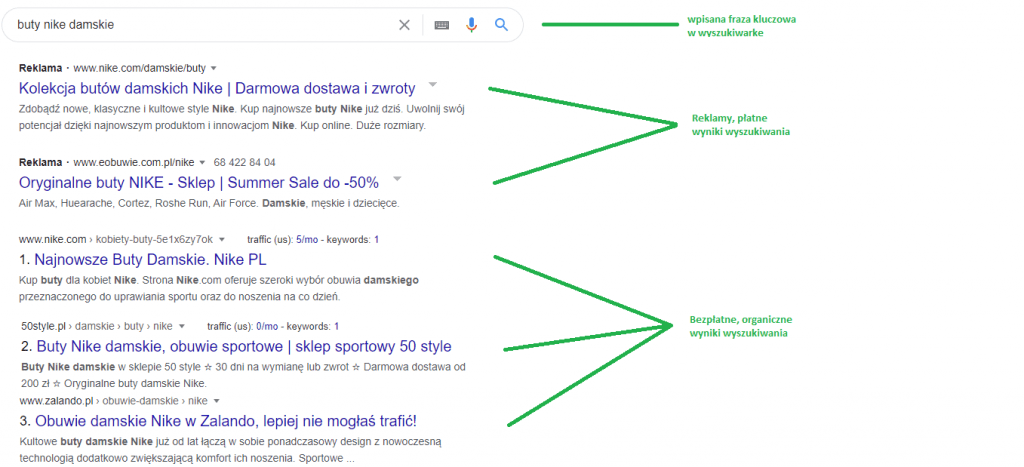
Użytkownicy branży e-commerce chcący skorzystać z produktu bądź usługi w internecie najczęściej korzystają z usług amerykańskiego giganta – Google LLC. Wyszukiwarka ta jest najbardziej popularną i najczęściej używaną na świecie, w samej Polsce z jej usług korzysta około 97,59% użytkowników internetu. A więc na czym polega pozycjonowanie stron internetowych? Działania pozycjonerskie w większości prowadzą do zbudowania silnej pozycji w wynikach wyszukiwania tej wyszukiwarki.
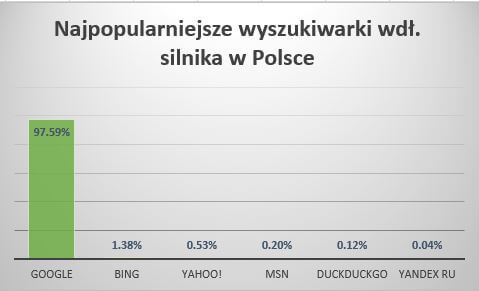
Żródło: https://gs.statcounter.com/search-engine-market-share/all/poland
Wysokie pozycje w bezpłatnych wynikach wyszukiwania tzw. SERP (ang. SERP Search Engine Results Page) pozwalają firmom na pozyskiwanie nowych Klientów, długofalowe budowanie świadomości marki czy podniesieniu prestiżu.
Pozycjonowanie przynosi najlepsze efekty gdy prace stricte pozycjonerskie są wdrażane wspólnie z pracami graficznymi, programistycznymi, copywriterskimi oraz względem wcześniej opracowanej strategii marketingowej. Wybierając firmę warto zastanowić się nad agencją marketingową, która w swojej ofercie posiada wszystkie te usługi. Zbudowanie spójnego wizerunku w internecie, niejednokrotnie pozwala firmom na znaczne zwiększenie obrotów i ugruntowanie swojej pozycji w oczach Klientów. Konsumenci coraz częściej wykorzystują internet do poszukiwania produktów bądź usług.
Żródło: https://gs.statcounter.com/search-engine-market-share/all/polandunity-group-e-commerce-w-polsce-moze-przekroczyc-100-mld-zl-w-tym-roku-6507248780777089a.html
Dlaczego pozycjonowanie jest ważne i jaki jest jego cel?
Przeprowadzając proces pozycjonowania strony www, dążymy do tego by znalezła się ona na jak najwyższych pozycjach w wynikach wyszukiwania, na możliwie jak najwiekszą liczbę wpisywanych słów kluczowych, które są ściśle powiązanych z naszą marką, jej produktami czy usługami. Dzięki czemu możemy zrealizować założone przez nas cele sprzedażowe czy wizerunkowe generując oczekiwany ruch i konwersje.
W odróżnienu do płatnych wyników wyszukiwania (tzw reklamy PPC ang. PayPerClick) np. reklamy w GoogleAds, pozycjonowanie pozwoli na pozyskanie klientów relatywnie niewielkim kosztem, a jego efekty mogą być widoczne przez długi okres czasu. Najczęściej polecaną metodą doboru słów kluczowych jest tak zwane pozycjonowanie na długi ogon (ang. long tail) Jest to ciag przynajmiej trzech słów np dodatki krawieckie Łódz.
Na czym polega proces pozycjonowania stron www?
Proces prowadzacy do osiągniecia przez witrynę internetową wysokich pozycji w wyszukiwarce dzieli sie na trzy podstawowe etapy:
- Optymalizację (techniczna+treści) bezpośrednio na stronie internetowej (ang. onsite)
- Działania poza samą witryna (ang.offsite) np. proces budowania linków tzw. Link building
- Copywriting, Content marketing
SEO + Link building + treści = wysokie pozycje generujace ruch na stronie
Na co zwrócić szczególną uwage przystępując do procesu pozycjonowania?
• Branża w jakim działamy. W zależności od tego czy prowadzimy sklep www, witrynę informacyjną czy stronę wizytówkę pozycjoner powinien przygotować odpowiednia strategię pozycjonowania, właściwie dobrać zestaw odpowiednich działań do posiadanego budżetu . Należy określić czy należy skupić się bardziej na content marketingu czy np. tworzeniu link buildingu. Najczęściej łączy się obie strategie tak by zwiększać ruch w serwisie i realizować założone cele np. wizerunkowe i sprzedażowe
• Rynek na jakim działamy. Inne działania pozycjonerskie należy wykonać jeśli zależy nam pozyskaniu Klientów na rynku lokalnym np. w Gdańsku, a inne jeśli skupiamy się na rynku ogólnopolskim czy międzynarodowym
• Konkurencja. Inaczej należy określić strategię pozycjonowania dla firm działających na mało konkurencyjnym rynku niż tam gdzie konkurencja jest bardzo duża.
• Stan naszej obecnej witryny. Czy jakieś prace optymalizacyjne zostały już wykonane? Czy nasza strona www jest nowoczesna oraz przyjazna wyszukiwarkom jak i użytkownikom?. Czy posiada unikalny, profesjonalny design?
• Obecna pozycja w wyszukiwarce. Czy na wpisywane przez nas w wyszukiwarkę internetową słowa kluczowa jesteśmy wysoko? na pierwszej stronie? Jakie są nasze obecne wyniki. Jak nasze pozycje przedstawiają się na tle konkurencji?
Pozycjonowanie stron internetowych jest procesem ciągłym, którego efekty najczęściej są zauważalne po około 3-6 miesiącach prac pozycjonerskich. Pozycjonowanie to proces wymagający właściwego połączenia optymalizacji technicznej, content marketingu czy link buildingu..
Ile kosztuje pozycjonowanie stron www?
Nie jest możliwe by jednoznacznie odpowiedzieć na to pytanie. Najczęściej minimalny budżet przeznaczany na pozycjonowanie w Polsce to 500 pln/mc, przy pozycjonowaniu strony internetowej, a od 1500 pln/mc w przypadku sklepów internetowych. Wiele czynników ma wpływ na koszty pozycjonowania danej strony www: branża w jakiej działamy, założone cele, stan naszej witryny, wiek witryny i dziesiątki innych czynników.
Masz pytania?
Chciałbyś uzyskać więcej informacji na temat pozycjonowania stron www bądz innych usług marketingowych? Zapraszamy do kontaktu z nami.
Autor:
huberto
Positioning of websites is one of the elements of broadly understood internet marketing. Defined as a process the consistent implementation of which leads to the highest possible position in organic search results. These results are displayed in search engines such as Google, Yahoo! or BING, for words entered by users or a sequence of words, the so-called key phrases. (keywords)

E-commerce users who want to use a product or service on the Internet most often go for the services of the American giant - Google LLC. This search engine is the most popular in the world, in Poland alone, its services are used by approximately 97.59% of Internet users. Positioning activities mostly lead to building a strong position in the search results of this search engine.

Żródło: https://gs.statcounter.com/search-engine-market-share/all/poland
High positions in organic search results, the so-called SERP (SERP Search Engine Results Page) allow companies to acquire new customers, build brand awareness in the long term, or raise prestige.
Positioning brings the best results when strictly positioning works are implemented together with graphic, programming, copywriting works and in relation to a previously developed marketing strategy. Building a consistent image on the Internet often allows companies to significantly increase their turnover and consolidate their position in the eyes of customers. Consumers more and more often use the Internet to search for products or services.
Source: https://gs.statcounter.com/search-engine-market-share/all/polandunity-group-e-commerce-w-polsce-moze-przekroczyc-100-mld-zl-w-tym-roku-6507248780777089a.html
Why is positioning important and what is its purpose?
By carrying out the process of website positioning, we strive to ensure that it is in the highest positions in the search results, for as many keywords as possible, which are closely related to our brand, its products or services. Thanks to this, we can achieve the sales or image goals set by us, generating the expected traffic and conversions.
Contrary to paid search results (so-called PayPerClick ads), for example advertising in GoogleAds, positioning will allow you to acquire customers at a relatively low cost, and its effects may be visible for a long period of time. The most frequently recommended method of selecting keywords is the so-called long tail positioning. It is a sequence of at least three words, eg tailoring accessories Łódź.
What is the website positioning process?
The process leading to a website achieving high search engine positions is divided into three basic stages:
- Optimization (technical + content) directly on the website (onsite)
- Activities beyond the website itself (offsite), e.g. link building process, the so-called Link building
- Copywriting, Content marketing
SEO + Link building + content = high rankings generating traffic on the website
What to pay special attention to when starting the positioning process?
• The industry in which we operate. Depending on whether we run a website, information website or a business card website, the positioner should prepare an appropriate positioning strategy, properly select a set of appropriate activities to the budget. It should be determined whether you should focus more on content marketing or, for example, creating link building. Most often, both strategies are combined in order to increase traffic on the website and achieve goals, e.g. image and sales
• The market we operate on. Specific positioning activities should be performed if we want to attract clients on the local market, e.g. in Gdańsk, and other ones if we focus on the national or international market
• Competition. The positioning strategy for companies operating on a less competitive market should be defined differently than where the competition is very strong.
• The status of our current site. Has any optimization work been done? Is our website modern and friendly to search engines and users? Does it have a unique, professional design?
• Current position in the search engine. Are we high on the keywords we enter in the search engine? At least on the first page? What are our current results? How do our positions compare to the competition?
Positioning of websites is a continuous process, the effects of which are most often noticeable after about 3-6 months of positioning work. Positioning is a process that requires the right combination of technical optimization, content marketing or link building...
How much does website positioning cost?
It is not possible to answer this question unambiguously. Most often, the minimum budget allocated to positioning in Poland is PLN 500 / month for website positioning, and from PLN 1500 / month for online stores. Many factors affect the cost of positioning a given website: the industry in which we operate, goals, the condition of our website, the age of the website and dozens of other factors.
Questions?
Would you like more information on website positioning or other marketing services? Feel free to contact us.
Author:
huberto
